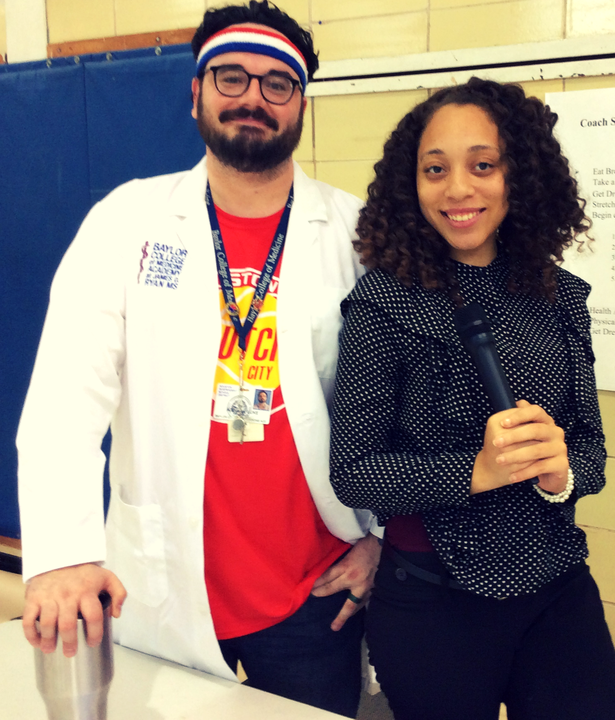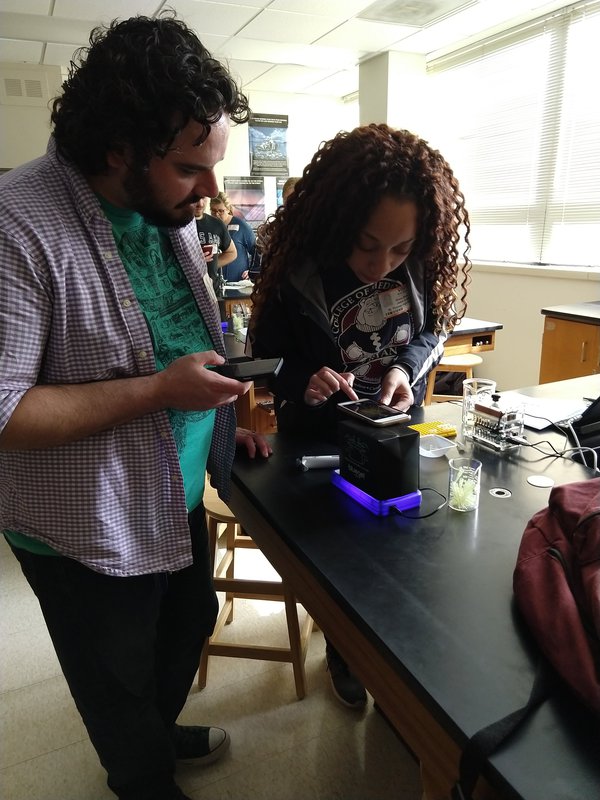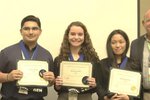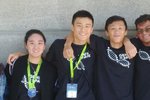GiS Spotlight: Mr. Luke Aguilar and Ms. Briana Brown, 2018 Constellation Award - Southeast Region
The Constellation Award celebrates an educational institution’s collective enthusiasm for science and space. The five awards are given to the educational institution with the highest number of submissions from each of the major US geographic regions. Mr. Luke Aguilar and Ms. Briana Brown of Baylor College of Medicine Academy at James D. Ryan Middle School in Houston, Texas are the 2018 Constellation Award winner for the Southeast region. This is the third win for BCMA! We asked Mr. Aguilar and Ms. Brown a few questions about their students' Genes in Space experience.

Tell us a little bit about yourself and your school:
As a team, Luke Aguilar and Briana Brown are located in the heart of Houston, Texas as teachers at Baylor College of Medicine Academy at James D. Ryan Middle School (BCMA). The school is an open-enrollment magnet school and is very diverse with the staff and students.
As a first year educator, Mr. Aguilar primarily teaches Foundation of Biotechnology, Bioengineering, and Biomedicine and Culinary Chemistry. Transitioning from the oil and gas industry, Luke desired to be involved in a more rewarding career where he could apply his science background. “Teaching, like anything else, has its ups and downs, but the fast-paced nature, rewarding qualities, and day to day changes make it a unique and enjoyable profession that I am thankful I pursued. I know it sounds sappy and cliché, but the children really make it all worthwhile”. Ms. Brown is a second-year educator teaching Biotechnology, Bioengineering, and Biomedicine and Neuroscience. While also serving as a botany and business teacher, with a special interest in dance, Ms. Brown is committed to increasing the involvement of students in STEM and health-related careers.
What was it like to use Genes in Space as a classroom activity?
As a classroom activity, Genes in Space (GiS) was a great tool to allow the students to take their newly acquired scientific knowledge and put it to good use! It was definitely a perfect way to culminate a rewarding year of enrichment. We started off our school year with an Independent Research (IR) project, also known as Science Fair. While the IR projects are a great, hands-on way for students to investigate answers to questions that they find interesting and important, they are also limited by resources, time, and data collecting abilities. These are limitations that the Genes in Space projects were not bound by and this is what made Genes in Space so enticing. Concerning Genes in Space, the questions and ideas were limited only by the students’ creativity and imaginations. Many of the questions posed were ones the students wanted to work on for their IR projects, but decided instead to save due to time and equipment constraints. As part of our second semester, we discuss the expression of proteins and DNA so the Genes in Space contest ties in perfectly into our curriculum. We were able to bridge our lessons with GiS which then led to the discussion of DNA extraction, gel electrophoresis, and PCR.
The biggest challenge concerning Genes in Space was narrowing the ideas down to a single, well researched and thought out question that could be pursued. When the sky is the limit, it can often be hard to focus on one particular subject or topic. We watched a lot of GiS videos on the website and YouTube for support and ideas, and we had multiple days using laptops and the internet to engage in research.
Luke and I also attended a Genes in Space workshop which helped us restructure how we introduced the project. From that alone, I believe we were able to stimulate creativity and align ourselves more appropriately with the project goals, as well as assist our students during the brainstorming process.

Mr.Aguilar and Ms.Brown at the Genes in Space workshop in Houston February 1st, 2018
What did your students gain by participating in Genes in Space?
Each year is different but I believe the students integrated what we learned in class with an actual project, making the learning process more cohesive. GiS allows the students to be innovators and explore unimaginable ideas without the fear of “being wrong”. When students have the freedom to learn and have fun while doing it, the possibilities for personal and academic growth are endless. The students also felt like active research scientist because they knew that their project had the opportunity to be presented to NASA. Becoming an astronaut or contributing to science on a nation-wide and world-wide level can be seen as abstract or a dream, so essentially Genes in Space let our students “live the dream”, it is a great experience!
Do you have any advice for teachers thinking about using Genes in Space in their classrooms?
A good piece of advice is to get started early, the earlier the better for brainstorming and revising for the final submission. The best advice I can give, however, to any teacher out there interested in getting their students to participate in the Genes in Space contest is to get excited about it. When you’re excited and explain to the students about the impact their submissions could have on the world at large, it’ll get them hooked. In the age of instant gratification and communication made possible by technology and the internet, everyone wants to leave their mark on the world. This is a great way to do so and to solve some issues that will allow for further space travel, and even the colonization of Mars! That right there is enough to get anybody pumped!


